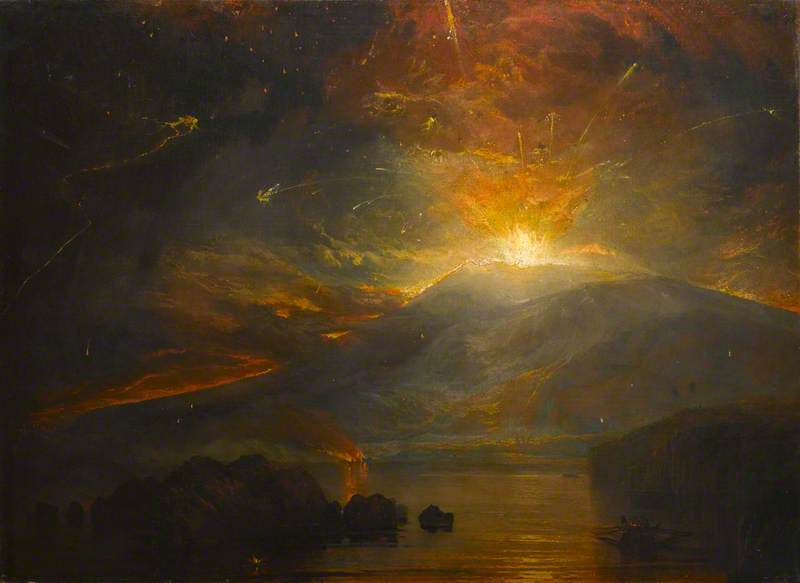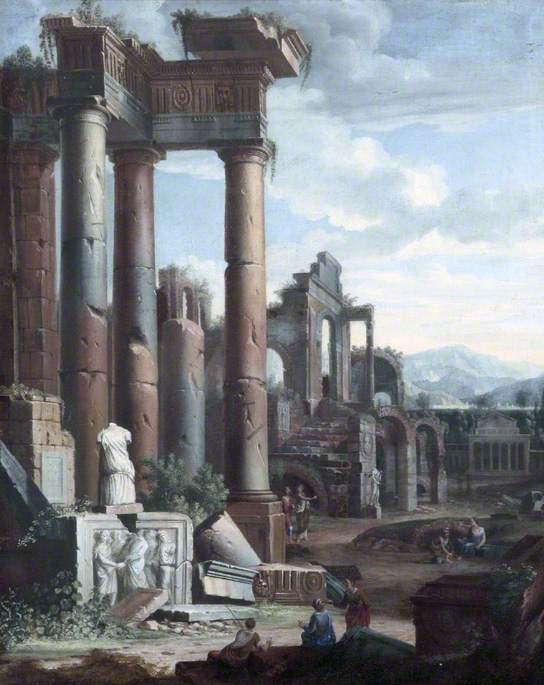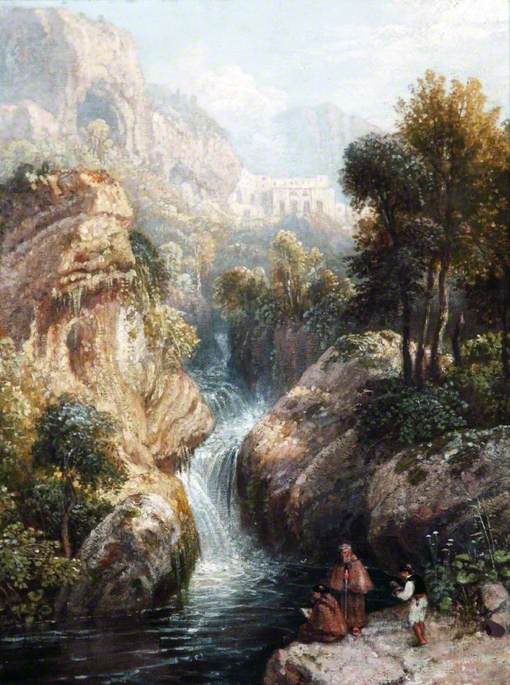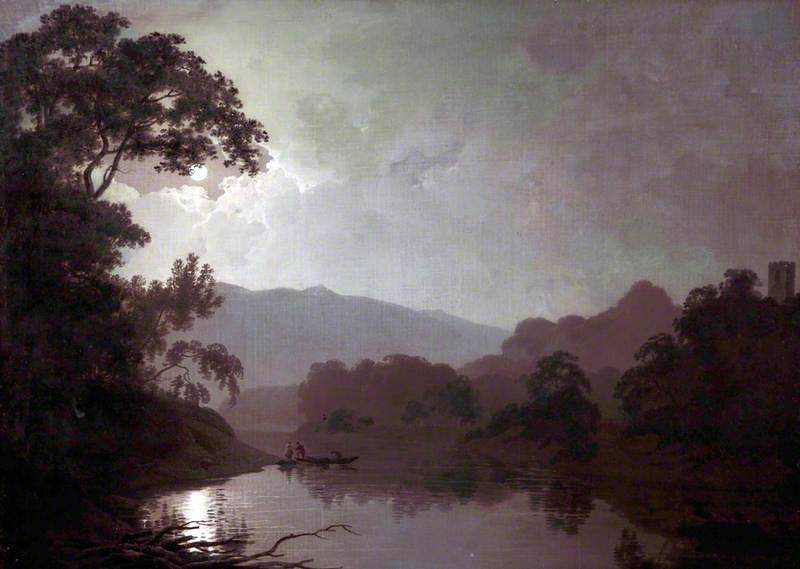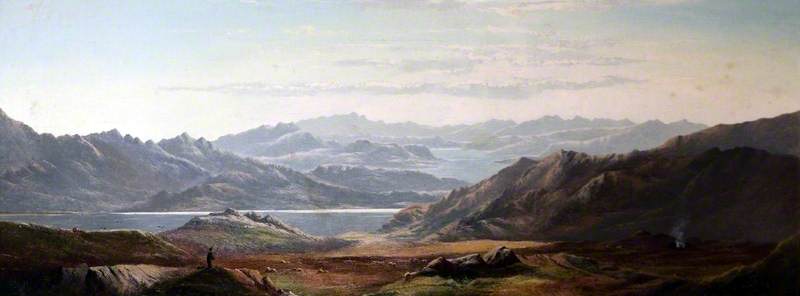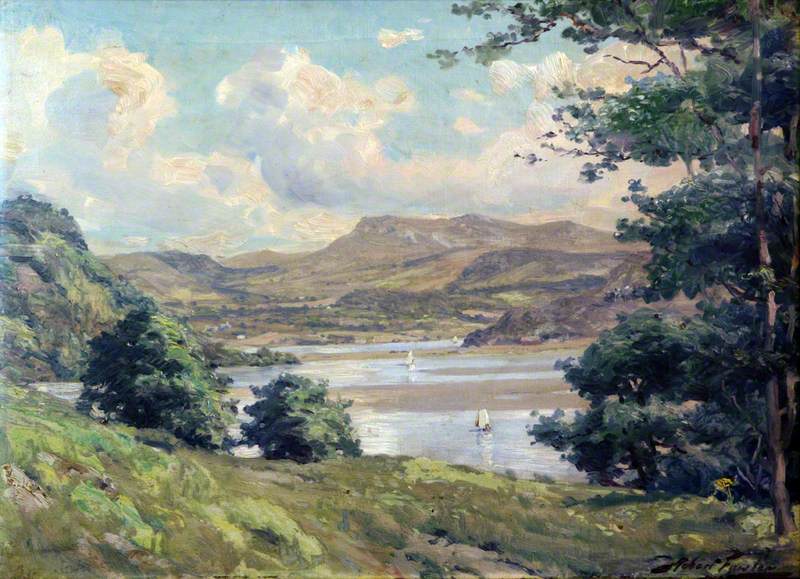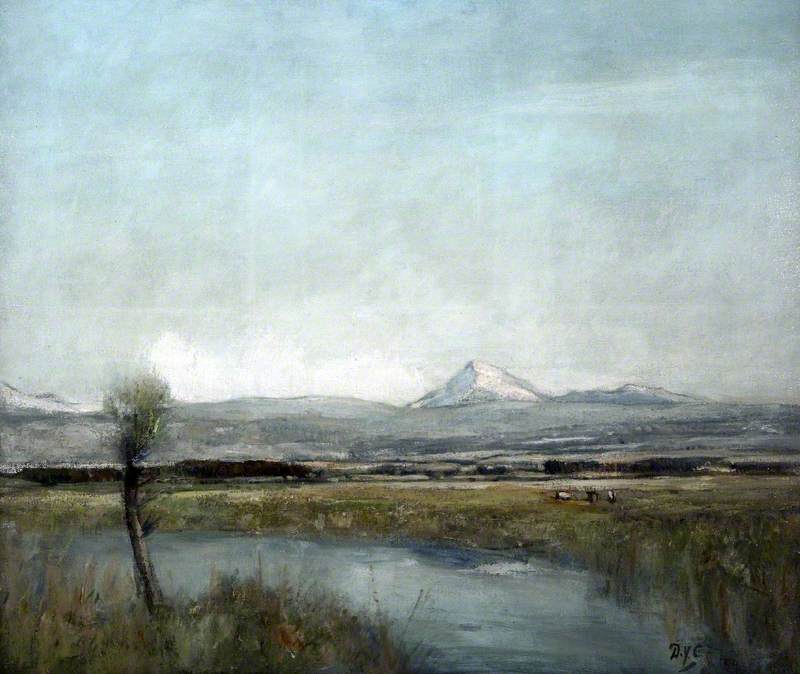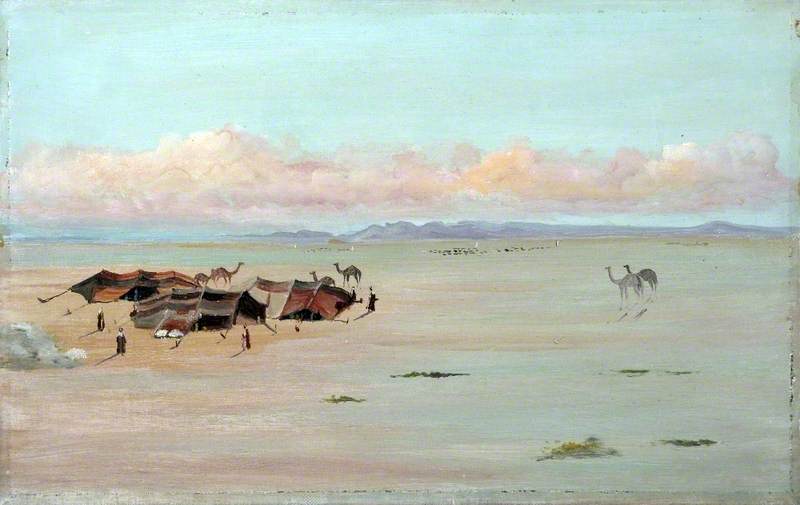The Victoria Gallery & Museum is part of the University of Liverpool which has been collecting artworks since its inception in the 1880s. Here is a selection of landscapes from the collection. All are available to purchase as prints from the Art UK shop
-
The Eruption of the Soufrière Mountains in the Island of St Vincent, 30 April 1812
The Eruption of the Soufrière Mountains in the Island of St Vincent, 30 April 1812 1815The VG&M's most famous painting is this spectacular volcanic eruption scene by JMW Turner. The Soufriere on the Caribbean island of St Vincent has been turbulent throughout history and its 1812 eruption was especially violent. Turner wasn't there to see it though. He worked up his painting based on a sketch by plantation owner and barrister Hugh Keene who really did witness this phenomenon of nature.
Joseph Mallord William Turner (1775–1851)
Oil on canvas
H 79 x W 105 cm
University of Liverpool
-
Classical Ruins with Figures in the Morning
Classical Ruins with Figures in the Morning c.1750An example of the Italian landscape tradition of capriccio, where ruinous structures are conjured from the artist's imagination or real places are rendered derelict. Visitors to Italy on the Grand Tour created a thriving market for capricci to take home as souvenirs. Leading artists had their paintings and painting styles copied by lesser known talents. This painting is one of a pair in the VG&M collection which have been variously credited to follower of Viviano Codazzi, working in Rome and Naples in the mid-1600s, or a follower of Giovanni Paolo Panini, working in Rome in the mid-1700s.
Viviano Codazzi (c.1604–1670) (follower of)
Oil on canvas
H 88.6 x W 71.4 cm
University of Liverpool
-
Tivoli near Rome, Italy
Tivoli near Rome, ItalyHavell enjoyed a sucessful career as a painter of British landscapes until 1816 when he went to work in China and India. He returned to Britain a decade later but found it hard to restart his career. He decided to visit Italy in 1827 in the company of fellow artist Thomas Unwins and the pair journeyed to Florence, Rome and Naples. Havell's Italian sojourn had a big impact on his art. Afterwards he frequently painted Italian subjects such as this view of Tivoli, which he gave a fairytale quality.
William Havell (1782–1857)
Oil on canvas
H 44 x W 34 cm
University of Liverpool
-
Early Spring in the Austrian Tyrol
Early Spring in the Austrian TyrolStokes was a frequent visitor to the Tyrol with his wife, the Austrian-born artist Marianne Stokes (nee Preindlsberger). His landscapes of the region often have a glimmering quality to them as slender silver birches reach towards bright skies with snow-capped mountains in the distance. It was quite a remove from his home town of Southport (which has its charms) and his early career as a cotton broker in Liverpool before his artistic talent was recognised.
Adrian Scott Stokes (1854–1935)
Oil on canvas
H 70 x W 85 cm
University of Liverpool
-
Snowdon by Moonlight
Snowdon by MoonlightWright of Derby is known for theatrical chiaroscuro effects in his subject paintings, especially depictions of scientific experiments. Here he uses moonlight and its watery reflection to give dramatic impact to this haunting nocturne. A second glance reveals this apparently tranquil night in North Wales is harbouring some shady figures in a boat along the riverbank.
Joseph Wright of Derby (1734–1797)
Oil on canvas
H 88 x W 123 cm
University of Liverpool
-
Mountain Scene, Wales (?)
Mountain Scene, Wales (?)This Charles Leslie is not the more famous Charles Robert Leslie, painter of pale, rosebud-lipped young women, but is worthy of attention none the less. Our Charles Leslie was a landscape painter of merit who specialised in panoramic vistas of wide, open spaces in Wales and Scotland. Some consider he was the first artist to paint the countries in this way. Leslie worked to a formula, tending to have water in the fore or middle ground with mountain ranges rearing up behind to heighten the dramatic impact.
Charles Leslie (1835–1890)
Oil on canvas
H 37 x W 100 cm
University of Liverpool
-
Mountainous Landscape and Lake with Boats
Mountainous Landscape and Lake with BoatsThis Liverpool-based artist had two main strands to his work: mythological women in diaphanous garb, or landscapes. The VG&M have this fresh, breezy landscape with a tranquil lake reflecting the summer sky. The exact setting is not known but North Wales was a favourite location for Fowler's landscapes so it seems most likely.
Robert Fowler (1853–1926)
Oil on canvas
H 41 x W 57 cm
University of Liverpool
-
April Snow, Ben Ledi
April Snow, Ben LediGlasgow-born Cameron studied at Glasgow and Edinburgh schools of art and revelled in the scenery of his native country. He focussed on the changing effects of light on water and mountain. Here he captures Ben Ledi in Perthshire, a subject he painted and etched many times. Ben Ledi means 'Hill of the Gods' in Gaelic.
David Young Cameron (1865–1945)
Oil on canvas
H 86 x W 104 cm
University of Liverpool
-
Near Bidston, Wirral
Near Bidston, WirralBorn in Wallasey on the Wirral Peninsula, Adamson studied in Hertfordshire with the famous animal painter Lucy Kemp-Welch. Back home she quickly found success and was described at the time as ‘Liverpool’s most gifted artist’. She was a member of several important artists’ societies and began to gain a national reputation. A few months before her premature death Adamson had three paintings exhibited at the Royal Academy.
Dorothy Adamson (1894–1934)
Oil on canvas
H 50 x W 50 cm
University of Liverpool
-
Desert Landscape with Bedouin Tents, Camels and Figures
Desert Landscape with Bedouin Tents, Camels and Figures c.1887–1912The VG&M holds over 100 paintings by this artist/traveller. Lady Caroline Emily Gray Hill accompanied her solicitor husband on numerous journeys across Turkey, Syria and Jordan during the late 1800s. She recorded her impressions as she went, especially the huge skies and expanses of desert occasionally populated with people whose lives were very different to her own.
Caroline Emily Gray Hill (1843–1924)
Oil on canvas
H 23 x W 36 cm
University of Liverpool
Explore artists in this Curation
-
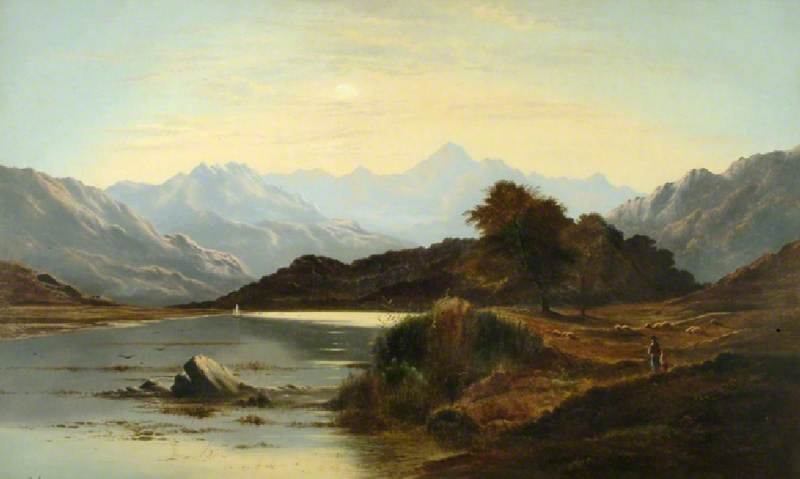 Charles Leslie (1835–1890)
Charles Leslie (1835–1890) -
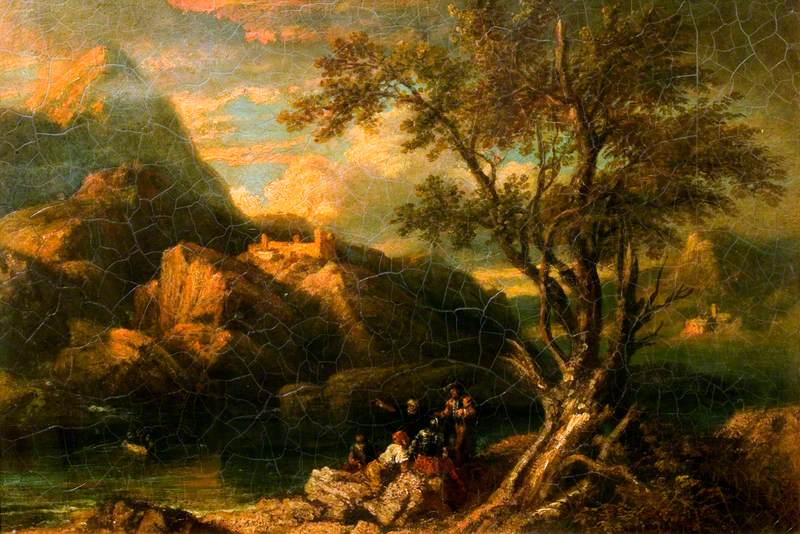 William Havell (1782–1857)
William Havell (1782–1857) -
 Robert Fowler (1853–1926)
Robert Fowler (1853–1926) -
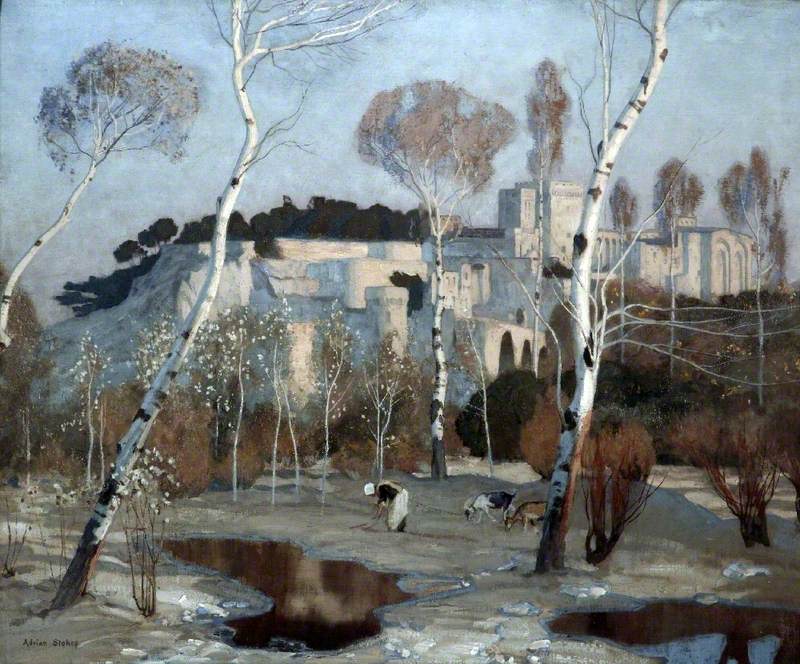 Adrian Scott Stokes (1854–1935)
Adrian Scott Stokes (1854–1935) -
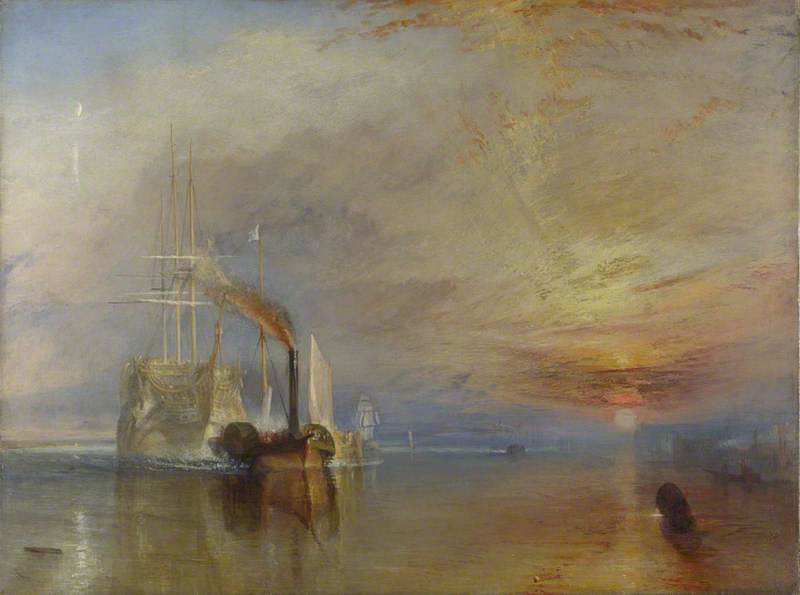 Joseph Mallord William Turner (1775–1851)
Joseph Mallord William Turner (1775–1851) -
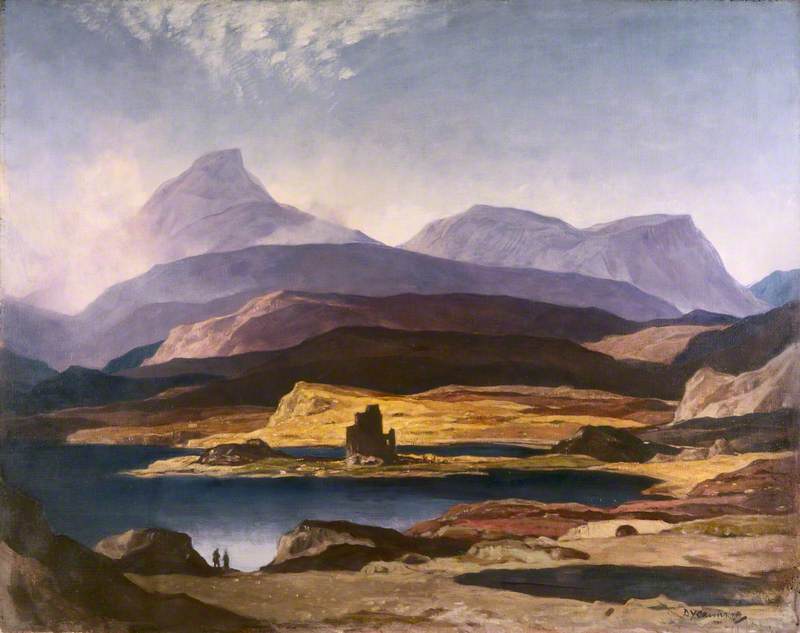 David Young Cameron (1865–1945)
David Young Cameron (1865–1945) -
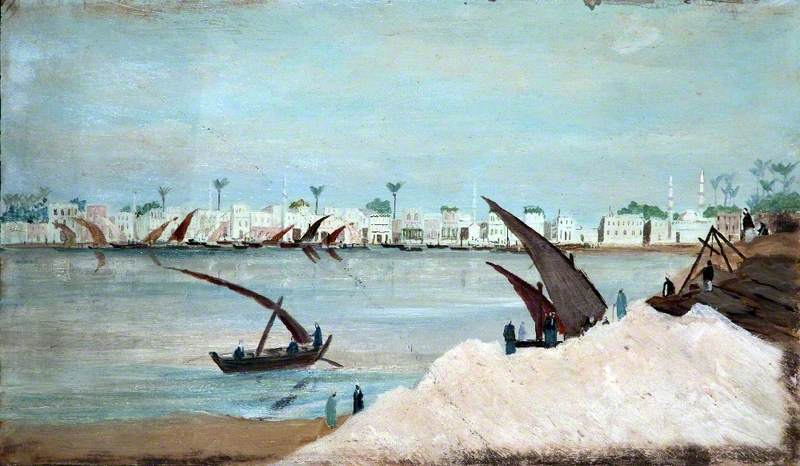 Caroline Emily Gray Hill (1843–1924)
Caroline Emily Gray Hill (1843–1924) -
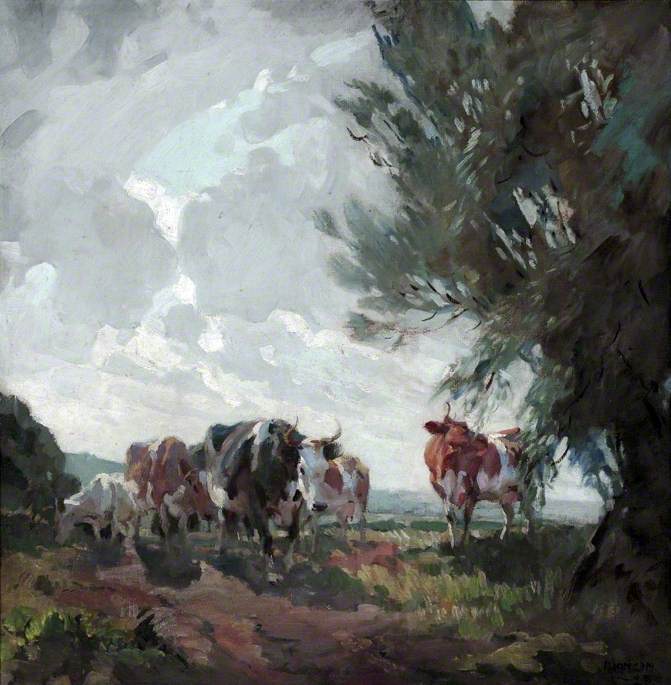 Dorothy Adamson (1894–1934)
Dorothy Adamson (1894–1934) -
 Viviano Codazzi (c.1604–1670)
Viviano Codazzi (c.1604–1670) -
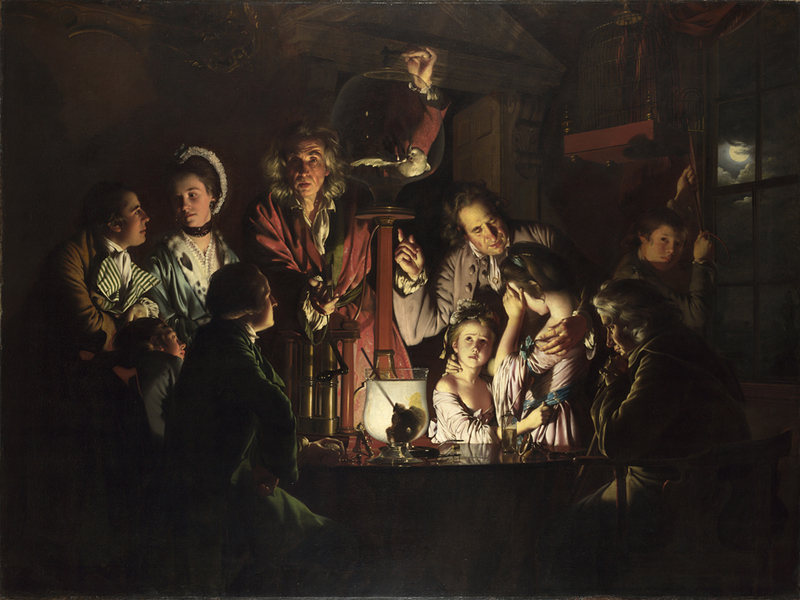 Joseph Wright of Derby (1734–1797)
Joseph Wright of Derby (1734–1797)
